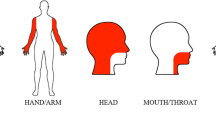Abstract
Verbs of perception describe the actual perception of some entity and it is emphasized by earlier researchers that lexicon in languages is conceptually-oriented and is necessary for our daily communicative needs. In this paper, we demonstrate and explain, which among the perception verbs have the higher frequencies of all the five senses (vision, hear, smell, taste, touch) by using a Telugu corpus and self-rating task. This study shows a greater lexical differentiation when compared to studies done using English corpus and other languages. Based on our analysis–vision, followed by hear are the most commonly used verbs in daily communicative needs by the Telugu speakers as compared to touch, taste, and smell; The inconsistency in usage of other senses are not identical to the vision and hear in other studies, it may be due to sampling and methodological variations in the corpus of different language, but in common these two senses play a key role in perception verbs. The study of Telugu perception verbs may give more interesting facts and insights into the cognitive linguistics paradigm.






Similar content being viewed by others
References
Aikhenvald, A. Y., & Storch, A. (2013). 1 Linguistic expression of perception and cognition: A typological glimpse (pp. 1–45). In Perception and cognition in language and culture.
Berlin, B., & Kay, P. (1969). Basic color terms: Their Universality and evolution. University of California Press.
Connell, L., & Lynott, D. (2009). Is a bear white in the woods? Parallel representation of implied object color during language comprehension. Psychonomic Bulletin and Review, 16(3), 573–577.
Connell, L., & Lynott, D. (2010). Look but don’t touch: Tactile disadvantage in processing modality-specific words. Cognition, 115(1), 1–9.
Connell, L., & Lynott, D. (2013). Modality exclusivity norms for 400 nouns: The relationship between perceptual experience and surface word form. Behavior Research Methods, 45, 516–526.
Dash, N. S., & Arulmozi, S. (2018). History, features, and typology of language Corpora (pp. 35–49). Springer.
Evans, N., & Wilkins, D. (2000). In the mind’s ear: The semantic extensions of perception verbs in Australian languages. Language, 76(3), 546–592.
Galac, Á. (2020). Semantic change of basic perception verbs in English, German, French, Spanish, Italian, and Hungarian. Argumentum., 16, 125–146.
Gibbs, R. W., Jr. (2003). Embodied experience and linguistic meaning. Brain and Language, 84(1), 1–15.
Gisborne, N. (2010). The event structure of perception verbs. Oxford University Press on Demand.
Ibarretxe-Antunano, B. I. (1999). Polysemy and metaphor in perception verbs: a cross-linguistic study. USA: University of Edinburgh.
Ibarretxe-Antuñano, I. (2008). Vision metaphors for the intellect: Are they really cross-linguistic? Atlantis, 30(1), 15–33.
Jumaah, R. T., Md Rashid, S., Abdul Jabar, M. A. B., & Ali, A. M. (2020). A cognitive semantic analysis of arabic verb of visual perception رأى (ra’a) in fiction writing. SAGE Open, 10(3), 215824402094952.
Lado, R. (1961). Language testing: The construction and use of foreign language tests. A Teacher's Book.
Langacker, R. (1987). Nouns and verbs. Language, 63(1), 53–94.
Levin, B. (1993). English verb classes and alternations: A preliminary investigation. University of Chicago Press.
Levinson, S. C., & Majid, A. (2014). Differential ineffability and the senses. Mind & Language, 29(4), 407–427.
Louwerse, M., & Connell, L. (2011). A taste of words: Linguistic context and perceptual simulation predict the modality of words. Cognitive Science, 35(2), 381–398.
Majid, A., & Levinson, S. C. (2011). The senses in language and culture. The Senses and Society, 6(1), 5–18.
Miller, G. A., & Johnson-Laird, P. N. (1976). Language and perception. Harvard University Press.
Nedelcheva, S. (2020). Exploring smell from a cognitive perspective in english and Bulgarian (A Corpus Study). Studies in Linguistics, Culture, and FLT, 8(2), 95–116.
San Roque, L., et al. (2015). Vision verbs dominate in conversation across cultures, but the ranking of non-visual verbs varies. Cognitive Linguistics, 26(1), 31–60.
Spence, C. (2012). Managing sensory expectations concerning products and brands: Capitalizing on the potential of sound and shape symbolism. Journal of Consumer Psychology, 22, 37–54.
Stokes, D., & Biggs, S. (2015). The dominance of the visual. In D. Stokes, M. Matthen, & S. Biggs (Eds.), Perception and its Modalities (pp. 350–378). Oxford University.
Sweetser, E. (1990). Metaphorical and cultural aspects of semantic structure. Cambridge University Press.
Van Putten, S. (2020). Perception verbs and the conceptualization of the senses: The case of Avatime. Linguistics, 58(2), 1–38.
Viberg, A. (1983). The verbs of perception: A typological study. Linguistics, 21(1), 123–262.
Viberg, A. (1993). Crosslinguistic perspectives on lexical organization and lexical progression. In K. Hyltenstam & A. Viberg (Eds.), Progression and regression in language: Sociocultural, neuropsychological and linguistic perspectives (pp. 340–385). Cambridge University Press.
Acknowledgments
Authors would like to acknowledge all the participants and Prof. G. Uma Maheshwar Rao for providing Telugu Corpus and Shiva Ram Male for his assistance.
Author information
Authors and Affiliations
Corresponding author
Ethics declarations
Conflict of interest
All the authors declare that no competing interest exists.
Ethics Statement
This Manuscript was extracted from the Doctoral Thesis of P. Phani Krishna. The Ethical approval was received from the Institutional Ethics committee, University of Hyderabad, IEC approval number: UH/IEC/2018/30.
Additional information
Publisher's Note
Springer Nature remains neutral with regard to jurisdictional claims in published maps and institutional affiliations.
Rights and permissions
About this article
Cite this article
Krishna, P.P., Arulmozi, S. & Mishra, R.K. “Do You See and Hear More? A Study on Telugu Perception Verbs”. J Psycholinguist Res 51, 473–484 (2022). https://doi.org/10.1007/s10936-021-09827-7
Accepted:
Published:
Issue Date:
DOI: https://doi.org/10.1007/s10936-021-09827-7




